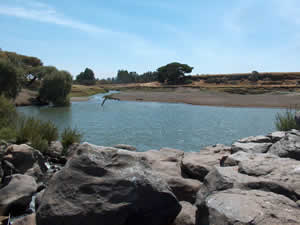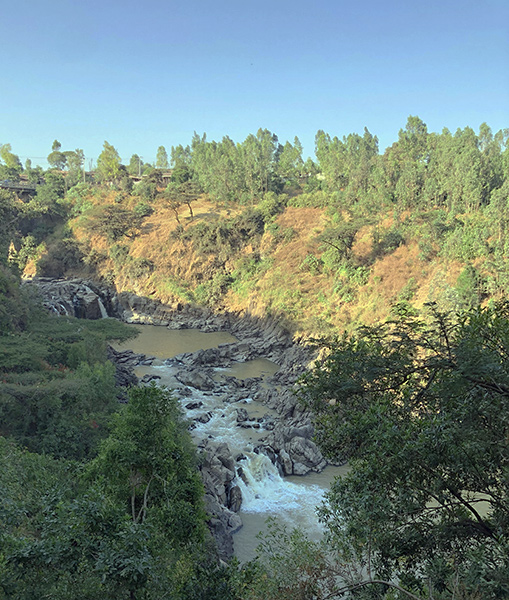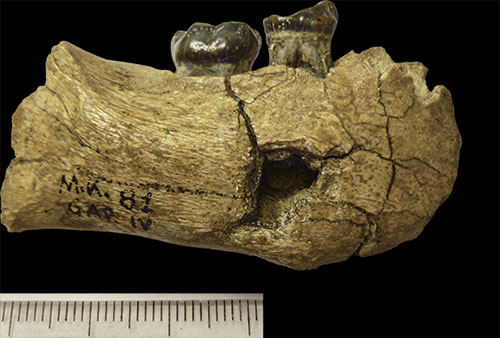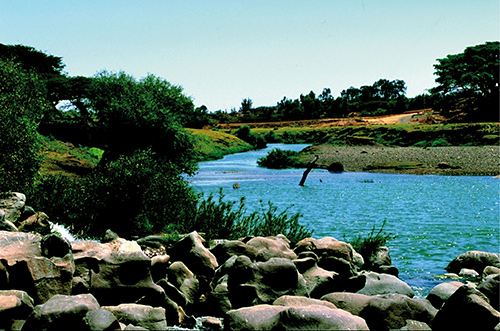Melka Kunture
Introduction
Melka Kunture is a cluster of prehistoric sites in the upper Awash valley, 50 km south of Addis Ababa, at 2000m asl. It was discovered by Gerard Dekker in 1963, then surveyed by Gérard Bailloud in 1964. It was first systematically researched by a French mission directed by Jean Chavaillon (1965-1982 / 1993-1995); then, since 1999, by an Italian mission directed by Marcello Piperno and later by Margherita Mussi, both of them from University of Rome “La Sapienza”; and subsequently, since 2019, by a Italo-Spanish mission codirected by Margherita Mussi, Eduardo Méndez-Quintas and Joaquín Panera.
The research is carried out in agreement with the Authority for Research and Conservation of Cultural Heritage of the Ethiopian Ministry of Culture and Tourism, and with the Oromia Culture and Tourism Bureau.

The Awash basin
The Awash basin extends over about 3000 km² between 2500 and 2000 m above sea level. It is delimited by Plio-Pleistocene volcanoes, the largest being the Wachacha and the Furi to the north, and the Boti and Agoïabi to the south.
The upper Awash basin lies on the so-called shoulder of the Main Ethiopian Rift, part of the Great Rift of eastern Africa.
Fluvial sedimentation (pebbles, gravels, sand, clay) was frequently interrupted by volcanic activity, whose products are important markers for stratigraphic correlations between the many archaeological sequences.
Volcanic rocks, including obsidian, also provided the raw material needed by hominins to flakie lithic tools. Over 70 archaeological levels have been discovered so far, and about 30 of them have been tested or excavated.
The Oldowan
The Oldowan sites have an age close to 2,000,000 years ago (Ma). We know several sites, as Karre I, Gombore IC and Garba IVE-F. The most complete information comes from Garba IVE-F, whose industry is notable for the predominance of obsidian.

The Acheulean
The early Acheulean is well known from two sites Garba IVD and Gombore IB. The first one is 1.95 million years (Ma) old and the second one somewhat younger. Therefore, these are currently the oldest Acheulean sites in the world. Nearby, Gombore Iδ and Gombore Iγ, which are more recent, are over 1.3 Ma. Around 1.2-1.0 Ma, the known sites multiply: Garba XII, Garba XIII, Simbiro III, Atebella II, as well as Gombore II, the largest of all, which was excavated in different sectors: Gombore II-1, the first to be exploited, then Gombore II-3, Gombore II-4, Gombore II-5 and finally Gombore Open Air Museum (Gombore OAM) which is open to public visits. The Final Acheulean is known mainly from Gombore II-2 and Garba I, dated respectively over 700,000 and around 600,000 years ago.
The Middle Stone Age
At Garba III, level B produced abundant lithic tools. The typology of implements, which include shaped pieces less than 10 cm in length, i.e. small bifacial tools, and small blades, together with circumstantial evidence from the stratigraphy, consistently point to the Early Middle Stone Age. The Middle Stone Age is so far only known from surface collections.
The Late Stone Age and later occurences
The East African Late Stone Age is mostly found close to the ground surface and much disturbed, as at Wofi and Kella. Recently, however, it has been discovered well stratified at Beefa Cave, the first known cave at Melka Kunture. In 2019 a shallow trench yielded an abundant microlithic industry on obsidian. Currently available radiocarbon dates assign this sequence to the Holocene. A little less than 7 km north of the Awash River, at Balchit, obsidian outcrops. As evidenced by the analyses of samples from several sites, this volcanic glass was an important raw material, frequently used ever since the Oldowan. The exploitation of obsidian in the Melka region went on until historical times, leaving in the area of Balchit extensive accumulations of tens of thousands of blades, cores, and residues.

Hominid Remains
Hominid remains were found during archaeological excavation in direct association with lithic industries: the hemimandible of a Homo cf. erectus child at Garba IVE, a humerus fragment of Homo cf. erectus at Gombore IB; two Homo heidelbergensis skull fragments at Gombore II-1 and three archaic Homo sapiens skull fragments at Garba III.
Hominid and animal footprints
Hominid footprints, which range in age from 1.2 to 0.7 Ma, were discovered in the last few years next to Gombore II OAM and at Gombore II-2. The tracks were produced both by adults and by children, including very young ones. Animal footprints were discovered the same levels. They had been made by mammals and birds, while bivalves also left traves.
These ichnological assemblages are among the oldest recorded in the world. Paleontological and paleobotanical investigations Paleontological and paleobotanical investigations have provided evidence the environment on the Ethiopian plateau during the Lower and Middle Pleistocene.
The vegetation was not a savanna one, but instead part of the Dry evergreen Afromontane Forest and Grassland Complex, which nowadays develops on the mountains of East Africa between 1800 and 3000 m above sea level. Climatic oscillations occurred, with changes in temperature and humidity, the expansion of wooded areas and modifications in animal population. In drier periods, bovids and equids were more abundant, whereas during more humid phases they were partially replaced by species better suited to wooded areas. Elephants are nearly non-existent all over the sequence, while hippo remains are generally very frequent.
